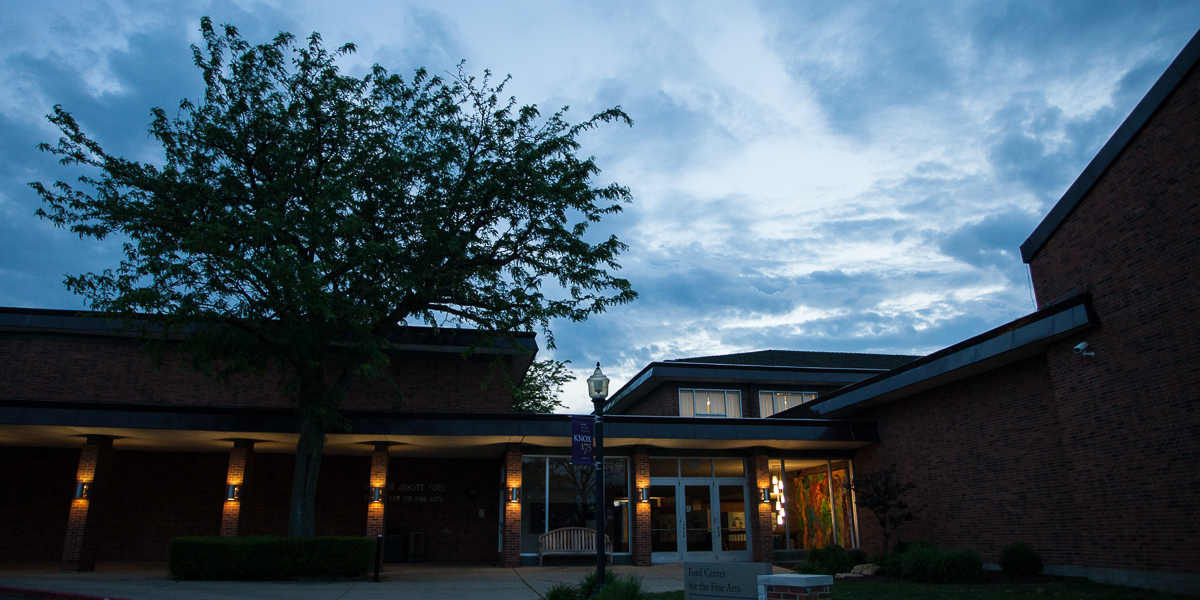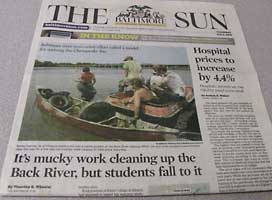

Venture Boldly

Adriana Colindres
Features Editor
2 East South Street
Galesburg, IL 61401

Knox College student Ben Boor has spent much of his summer trudging through the muck of a Maryland river, dragging out old tires, trash, and the occasional bowling ball.
He is part of a group of people devoted to restoring the health of the Back River, a once-thriving waterway that became seriously polluted over several decades. The goal is to make the river more hospitable for plants and wildlife.
"Honestly, it was kind of scary at first to realize how bad it was," said Boor, a native of Bel Air, Maryland, who will be a senior at Knox in the fall. "Even three or four years ago, nothing was able to live on the mudflats because there was too much trash."
Boor, who is pursuing majors in biology and anthropology and sociology, is helping to change that. He landed a summer job with the nonprofit Back River Restoration Committee, a volunteer-driven group that has worked for years to improve the condition of the river.
The group's efforts are succeeding. Crayfish and blue crabs, which always have inhabited the river, are becoming a more common sight because of the committee's trash removal work, said Boor, shown in the above photo wearing a hat.
Along with three other summer employees, he routinely wades into shallow areas of the Back River to remove all kinds of debris dumped by people using the river as a rubbish bin.
"We found a motorcycle. We found a lawn mower," Boor said. "We found trash cans with no trash. We found six or seven bowling balls, and lots of shoes, handbags, and coats."
In addition to hauling trash out of the water, Boor is conducting an ecological census that he hopes will shed some light on why certain parts of the river don't have much biological diversity. The most likely culprits are invasive species or poor soil quality.
That project will cover some familiar territory. "It's pretty much straight out of the Methods of Field Biology class I took at Knox," he said, referring to a course taught by Biology Professor Stuart Allison.
 Boor said he chose to attend Knox because of its strong focus on learning. "I wanted to do something with the sciences, but I also wanted to integrate the humanities into it. There wasn't any place I could do that as well as at Knox. It's a true liberal arts college."
Boor said he chose to attend Knox because of its strong focus on learning. "I wanted to do something with the sciences, but I also wanted to integrate the humanities into it. There wasn't any place I could do that as well as at Knox. It's a true liberal arts college."
Boor's academic background attracted the attention of his bosses, a retired painter and a technology education teacher. He is helping to write a grant proposal that could lead to funding for further cleanup and remediation work. Boor also is examining the possibility of re-introducing native grasses to the Back River watershed. The grasses, which draw nitrogen out of the water, would represent a key step in restoring the river and making it easier for other plants and animals to prosper.
The Back River project has attracted considerable attention in Maryland, where recent news stories have appeared in the Baltimore Sun newspaper and on newscasts for two Baltimore television stations, WJZ and WBFF. Boor was interviewed for all three pieces.
Boor, who hopes his Back River work leads to a career in the environmental field, believes that helping to nurse the river back to health is something he must do.
"There's a serious crisis with the Earth," he said. "It's not something I can really choose to ignore."
"I really love the land," he added. "You wouldn't leave trash in your living room, and I feel it's the same way with the environment."
Published on August 05, 2010